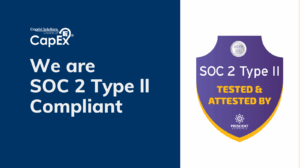On a fundamental level, your decision to invest in new equipment, property, or software is what capital expenditures (CapEx) are all about. Spending money accounts for the most important decisions you will ever make for your business; that is why you need to make sure that the investment decisions you make are wise.
One of the most prominent arguments in favor of CapEx is that companies find themselves operating more efficiently with better technology and equipment. Forward-thinking businesses are investing in areas where their competitors are not and, thus, are staying ahead of the curve.
By looking at it more conservatively, capital expenses often lead companies to riskier decision-making, which leads to new capital purchases not delivering on what was expected. To further exacerbate the situation, a weak economy often makes it challenging to repay capital purchased using debt.
That is why businesses that fail to manage their cash flow effectively find themselves in a state where they have spent their budget on operations on long-term purchases and investments but are not going to see immediate results and cash flow.
Yet, this does not mean that you should stray from making large purchases. Instead, it is possible to create an effective process that ensures that capital expenses are as lucrative as possible.
Below is a 3-step CapEx management process that helps organizations stay in the game by ensuring they have enough cash flow to remain competitive.
1. Establishing long-term objectives
When you establish clear, long-term objectives, you gain a framework to aid in deciding whether or not CapEx requests are worth approving. If CapEx projects do not benefit you in the long run, the choice is simple: do not invest in them.
Once you have set your long-term objectives, reflect on the end goal for your business, or, perhaps, a five to 10 years-plan. Undoubtedly, short-term plans support long-term vision – and effective CapEx will provide success even beyond these timelines.
Long-term objectives need to follow four key tenants:
● Profit: These are outcomes that increase earnings by a percentage.
● Growth: Outcomes that expand the business, hiring additional staff employees or markets.
● Service: Outcomes that improve customer satisfaction or retention.
● Social: Outcomes that focus on contribution to community and society.
Once the long-term goals have been established, open communication lines with your department heads. When there is an understanding of company goals, teams can better prioritize which requests to approve.
2. Creating a sound process for expense request approval
Whether you own a small business or lead a 10,000-person operation, all CapEx requests need to follow through with a thorough evaluation. A complete assessment will help you better grasp whether the ROI – when the costs and risks are compared – should be followed by capital purchases.
You should include a cost-benefit analysis (CBA), a systematic approach to your business decisions. When performing CBA, engage in brainstorming the costs and benefits. Assessing the cost of a capital expense is ultimately more than the price of the purchase alone. There are also direct and indirect costs to consider and opportunity costs that should not be missed.
For instance, if you are investing in a brick-and-mortar store, what will be the cost of employee training? Will you need to hire contractors for upkeep? What will you lose in productivity as you expand to another store?
When you have set your CapEx evaluation process, all managers will submit a formal CapEx request before starting a new fiscal year.
3. Budgeting
When you are correctly budgeting, you ensure that all the necessary funds are available to move forward with a specific project while keeping enough cash to support the entire operation. Companies that plan their budgets prior are continually working on deciding whether to allocate current funds to make capital purchases or add debt to the balance sheet.
At this point, you should be determining how your capital expenses will affect your operational costs. For instance, should you purchase a new vehicle fleet, you will also need to account for spending money on gas and maintenance.
You should also assess whether you will be continuing with CapEx or ultimately shifting to OpEx. Production tools are continually evolving, making it more lucrative to lease equipment or software instead of purchasing it.
It would help if you were not afraid to use negotiation tactics. Make it possible for vendors to bid to compete for your business. Make sure to find out if there are additional discounts. Make sure that you are getting the best offer.
Analyst Bottom Line
There is quite a to-do list when evaluating capital expenses, but the payoff is worth it. If you do your due diligence, you will ensure that your business will remain competitive and even look beyond to more growth opportunities.
By making sure you are operating from the scope of long-term objectives, ensuring that you have a comprehensive expense approval process, and budgeting in advance, you will be on your way to make sound investment decisions that will be lucrative for your organization in the short and long-run.




